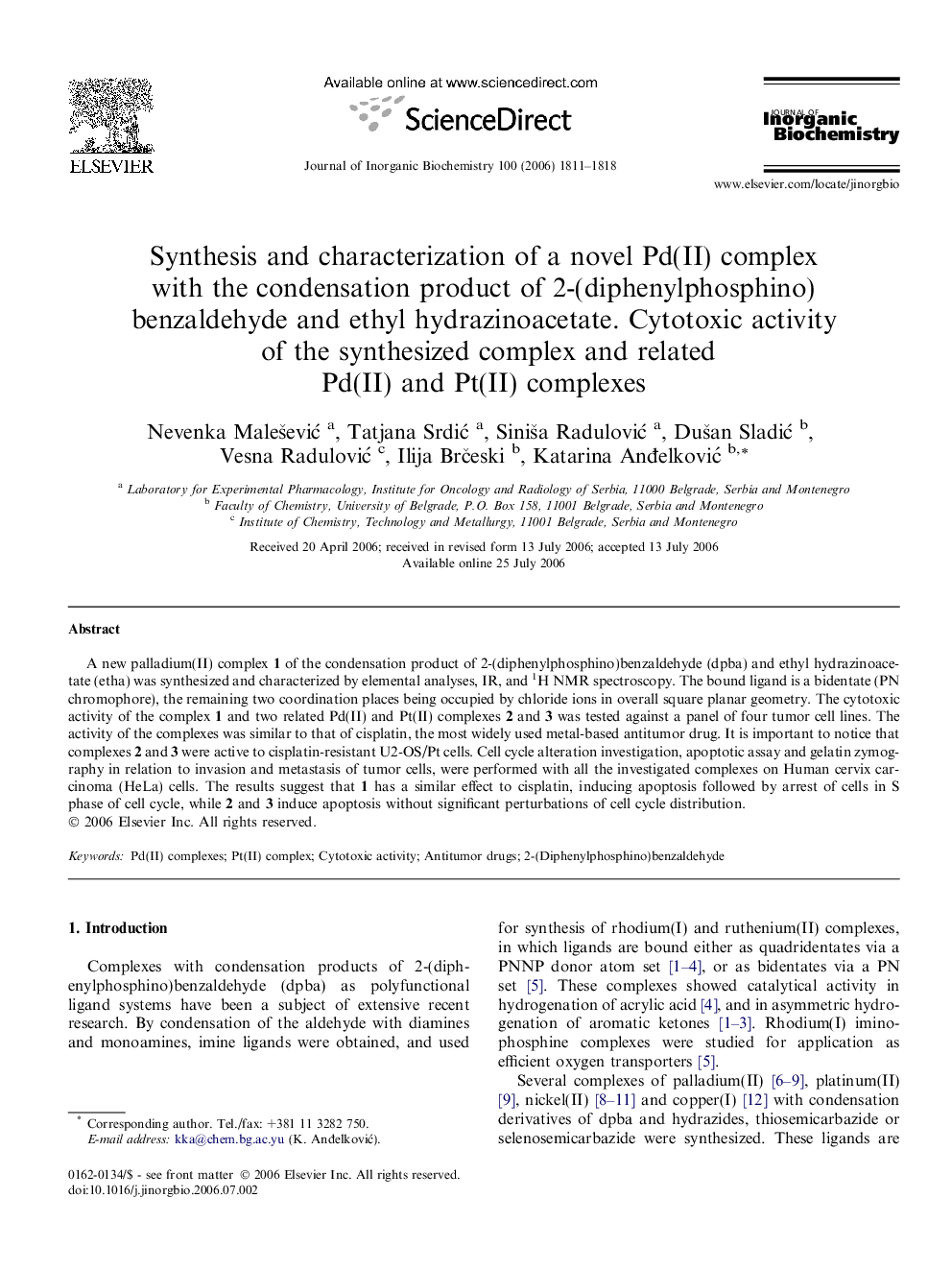| Article ID | Journal | Published Year | Pages | File Type |
|---|---|---|---|---|
| 10574213 | Journal of Inorganic Biochemistry | 2006 | 8 Pages |
Abstract
A new palladium(II) complex 1 of the condensation product of 2-(diphenylphosphino)benzaldehyde (dpba) and ethyl hydrazinoacetate (etha) was synthesized and characterized by elemental analyses, IR, and 1H NMR spectroscopy. The bound ligand is a bidentate (PN chromophore), the remaining two coordination places being occupied by chloride ions in overall square planar geometry. The cytotoxic activity of the complex 1 and two related Pd(II) and Pt(II) complexes 2 and 3 was tested against a panel of four tumor cell lines. The activity of the complexes was similar to that of cisplatin, the most widely used metal-based antitumor drug. It is important to notice that complexes 2 and 3 were active to cisplatin-resistant U2-OS/Pt cells. Cell cycle alteration investigation, apoptotic assay and gelatin zymography in relation to invasion and metastasis of tumor cells, were performed with all the investigated complexes on Human cervix carcinoma (HeLa) cells. The results suggest that 1 has a similar effect to cisplatin, inducing apoptosis followed by arrest of cells in S phase of cell cycle, while 2 and 3 induce apoptosis without significant perturbations of cell cycle distribution.
Related Topics
Physical Sciences and Engineering
Chemistry
Inorganic Chemistry
Authors
Nevenka MaleÅ¡eviÄ, Tatjana SrdiÄ, SiniÅ¡a RaduloviÄ, DuÅ¡an SladiÄ, Vesna RaduloviÄ, Ilija BrÄeski, Katarina AnÄelkoviÄ,
